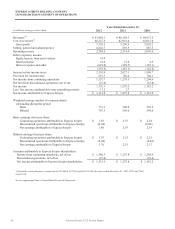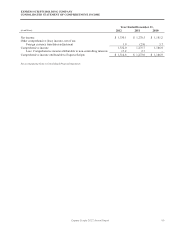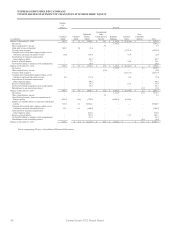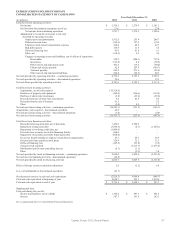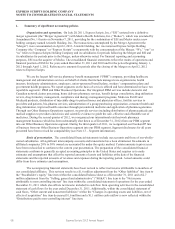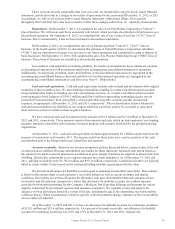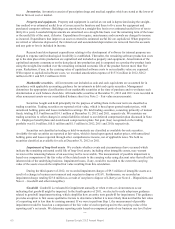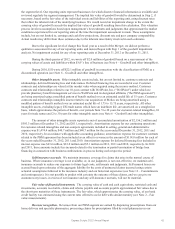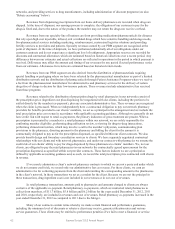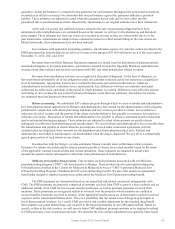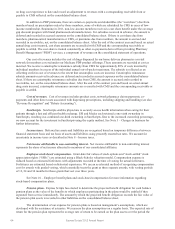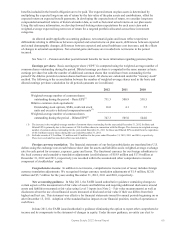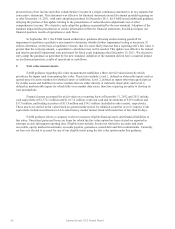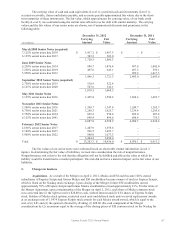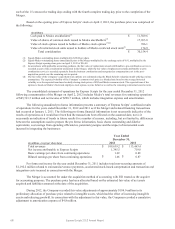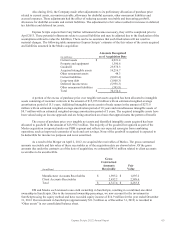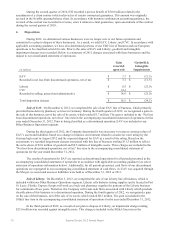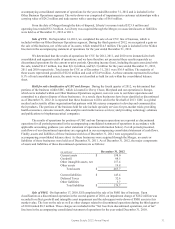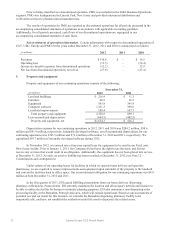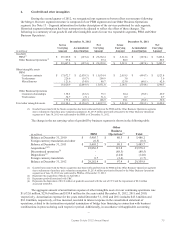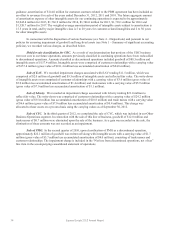Express Scripts 2012 Annual Report Download - page 66
Download and view the complete annual report
Please find page 66 of the 2012 Express Scripts annual report below. You can navigate through the pages in the report by either clicking on the pages listed below, or by using the keyword search tool below to find specific information within the annual report.
Express Scripts 2012 Annual Report64
63
on drug cost experience to date and record an adjustment to revenues with a corresponding receivable from or
payable to CMS reflected on the consolidated balance sheet.
In addition to PDP premiums, there are certain co-payments and deductibles (the “cost share”) due from
members based on prescription orders by those members, some of which are subsidized by CMS in cases of low-
income membership. Beginning in 2011, non-low-income members received a cost share benefit under the coverage
gap discount program with brand pharmaceutical manufacturers. For subsidies received in advance, the amount is
deferred and recorded in accrued expenses on the consolidated balance sheet. If there is cost share due from
members, pharmaceutical manufacturers or CMS, or premiums due from members, the amount is accrued and
recorded in receivables, net, on the consolidated balance sheet. After the end of the contract year and based on actual
annual drug costs incurred, cost share amounts are reconciled with CMS and the corresponding receivable or
payable is settled. The cost share is treated consistently as other co-payments derived from providing Pharmacy
Benefit Management (“PBM”) services, a component of revenues on the consolidated statement of operations.
Our cost of revenues includes the cost of drugs dispensed by our home delivery pharmacies or retail
network for members covered under our Medicare PDP product offerings. These amounts are recorded at cost as
incurred. We receive a catastrophic reinsurance subsidy from CMS for approximately 80% of costs incurred by
individual members in excess of the individual annual out-of-pocket maximum. The subsidy is reflected as an
offsetting credit in cost of revenues to the extent that catastrophic costs are incurred. Catastrophic reinsurance
subsidy amounts received in advance are deferred and recorded in accrued expenses on the consolidated balance
sheet. If there are catastrophic reinsurance subsidies due from CMS, the amount is accrued and recorded in
receivables, net, on the consolidated balance sheet. After the end of the contract year and based on actual annual
drug costs incurred, catastrophic reinsurance amounts are reconciled with CMS and the corresponding receivable or
payable is settled.
Cost of revenues. Cost of revenues includes product costs, network pharmacy claims payments, co-
payments and other direct costs associated with dispensing prescriptions, including shipping and handling (see also
“Revenue Recognition” and “Rebate Accounting”).
SureScripts. SureScripts enables physicians to securely access health information when caring for their
patients through a fast and efficient health exchange. ESI and Medco each retained a one-sixth ownership in
SureScripts, resulting in a combined one-third ownership in SureScripts. Due to the increased ownership percentage,
we now account for the investment in SureScripts using the equity method. See Note 3 – Changes in business for
further information.
Income taxes. Deferred tax assets and liabilities are recognized based on temporary differences between
financial statement basis and tax basis of assets and liabilities using presently enacted tax rates. We account for
uncertainty in income taxes as described in Note 8 – Income taxes.
Net income attributable to non-controlling interest. Net income attributable to non-controlling interest
represents the share of net income allocated to members of our consolidated affiliates.
Employee stock-based compensation. Grant-date fair values of stock options and “stock-settled” stock
appreciation rights (“SSRs”) are estimated using a Black-Scholes valuation model. Compensation expense is
reduced based on estimated forfeitures with adjustments recorded at the time of vesting for actual forfeitures.
Forfeitures are estimated based on historical experience. We use an accelerated method of recognizing compensation
cost for awards with graded vesting, which essentially treats the grant as three separate awards, with vesting periods
of 12, 24 and 36 months for those grants that vest over three years.
See Note 10 – Employee benefit plans and stock-based compensation for more information regarding
stock-based compensation plans.
Pension plans. Express Scripts has elected to determine the projected benefit obligation for cash balance
pension plans as the value of the benefits to which employees participating in the plans would be entitled if they
separated from service immediately. The amount by which the projected benefit obligation exceeds the fair value of
the pension plan assets is recorded in other liabilities on the consolidated balance sheet.
The determination of our expense for pension plans is based on management’s assumptions, which are
developed with the assistance of actuaries. We reassess the plan assumptions on a regular basis. The expected rate of
return for the pension plan represents the average rate of return to be earned on the plan assets over the period the


